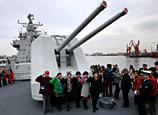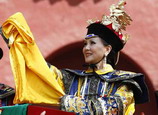
Jeremy Haft, a professor at Georgetown University's Asia studies program, said "powerful" market forces in China have enabled US exports to grow.
"As China continues to improve its agricultural capability and food safety, there will continue to be high demand for US agriculture/food exports," he said, referring to a major category in the countries' trade.
"China's dynamic, growing middle class will continue to purchase value-added US products and services," said Haft, author of All the Tea in China, a book that argues the US could leverage its competitive advantage over China to create jobs.
The council's report said US exports to China rose 294 percent, or nearly $81 billion, between 2003 and 2012. Forty-two states had export growth rates in triple digits during that period, while four — Alabama, Nevada, South Carolina and Vermont — had increases of 1,000 percent or more.
Last year, US exports to China covered a range of sectors, including crop production, transportation equipment, electronics, chemicals and machinery.
But Haft said more categories should be added to sustain the growth pace.
"Even though exports to China are growing very fast and from nearly every congressional district in the country, export intensity remains low — there are many more products and services that the US could be selling to China, thus creating and sustaining US jobs," he explained.
Although China continues to be the No 3 destination for US exports, the council report notes that the US share of all imports China receives fell to 7 percent last year from 10 percent in 2000. The US in 2012 was the fourth-biggest source of Chinese imports, after the European Union, Japan and South Korea.
"To help strengthen US' competitiveness, policymakers should consider developing a new US trade objective: Reclaim a 10 percent share of China's imports by 2015," Frisbie said. "Regaining a 10 percent share of China's import market will help US companies provide innovative products and services to China, boosting overall US sales and global competitiveness."

















 Giant pandas safe in quake-hit zone
Giant pandas safe in quake-hit zone


![]()
